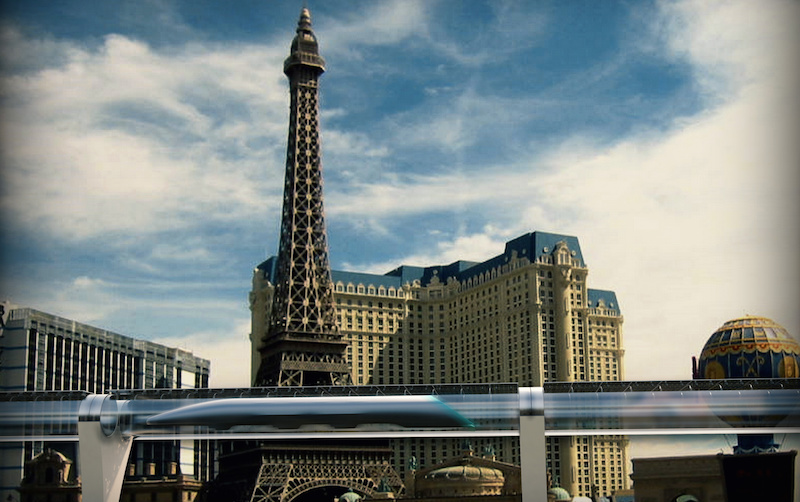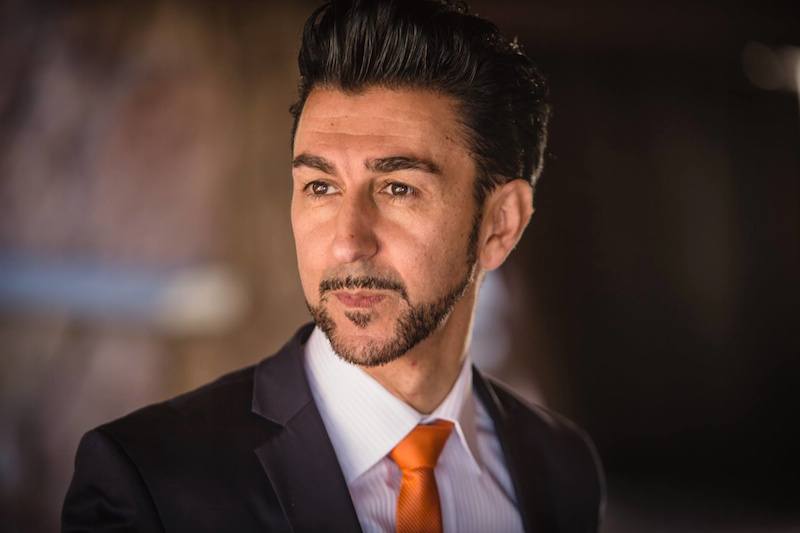
A Hyperloop concept visualization. Photo credit: Hyperloop Transportation Technologies.
Hyperloop Transportation Technologies (HTT), one of the entities developing a type of futuristic vacuum-tube based transportation system, says it’s conducting a US$2.5 million feasibility study for three possible routes in Indonesia.
HTT has also signed a joint venture agreement with Indonesian partners, forming Hyperloop Transtek Indonesia, its COO Bibop Gresta told Tech in Asia at the sidelines of a conference in Jakarta today.
Bibop and his local partners, entrepreneurs Dwi Putranto Sulaksono and Ron Mullers, signed the agreement in the presence of Indonesia’s ministry of transportation yesterday.

Bibop Gresta, who co-founded Hyperloop Transportation Technologies together with Dirk Ahlborn. Photo credit: Hyperloop Transportation Technologies.
The company will map out how it could develop Hyperloop systems on three routes in Indonesia: one in North Sumatra, one connecting airports across the Island of Java, and the third connecting Jakarta with satellite town Tangerang.
Unbelievable reality
It will produce more energy than it needs.
The Hyperloop is basically a long tube which is depressurized to the point of near vacuum. Inside, passenger-carrying capsules float due to magnetic levitation. Of course, it could also be used to transport goods. The near frictionless propulsion makes the Hyperloop energy efficient.
Integrated solar panels would even amke it “energy positive,” according to Bibop. HTT’s version of the Hyperloop will produce more energy than it needs, making it possible to monetize the transportation system through means other than passenger fares -for example by selling off excess electricity,Bibop believes.
The Hyperloop concept was first put forward by Tesla and SpaceX founder Elon Musk in 2013.
In a public paper, Musk sketched out the basic technological requirements and invited other entrepreneurs to commercialize the idea.
It’s largely agreed that the Hyperloop’s core technologies make sense, but it’s still up for debate whether it can be made to work at scale and at realistic costs.
Battle for Abu Dhabi
The battle for who can first build a commercial Hyperloop track takes place mainly between HTT and rival Hyperloop One, which is also US-based.
Both entities are trying to win partners and contracts across the globe. Each operates research tracks and test sites to varying degrees of scale.
HTT stands out in that it’s also structurally innovative. It employs a core team of about 35 people and works with a crowd of volunteers – 800 people at this point, Bibop says. There’s a scheme for how volunteers are compensated in stock options for the work hours they contribute.
All this makes HTT’s Hyperloop implementation sound utopian – concerns which Bibop acknowledges but shrugs off with an “unusual ideas require unusual solutions” attitude.
A possible first location for a commercial implementation could be the United Arab Emirates. Hyperloop One suggested a track connecting Abu Dhabi with Dubai, while HTT wants to link Abu Dhabi and Al Ain.
Before coming to Indonesia, the HTT team met with government officials in India. According to Bibop, the firm has negotiated agreements in a number of countries, including France, Slovakia, and Czech Republic.
This post Hyperloop begins feasibility study in Indonesia appeared first on Tech in Asia.